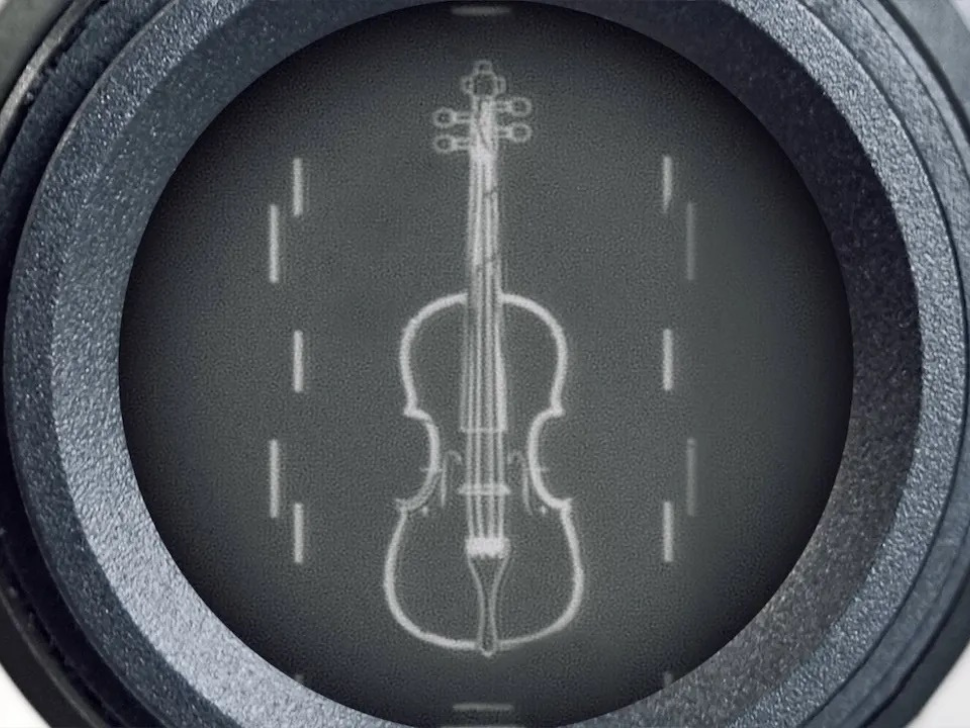Loughborough physicists unveil the 'world's smallest violin'—and it's thinner than a human hair
Tiny platinum violin is more than just a joke—it’s a breakthrough in nanotech research
If you’re thinking of filing a dramatic complaint about exams or class schedules at Loughborough University, you might want to brace yourself for a microscopic dose of sarcasm.
Physicists at the university have created what they believe is the world’s smallest violin—so tiny it could sit comfortably on a speck of dust, or nestle inside a single human hair. Measuring just 35 microns long and 13 microns wide (for reference, a human hair is between 17 and 180 microns thick), the instrument is, quite literally, nano-sized.
But while the project may seem like a tongue-in-cheek nod to the old saying, “Can you hear the world’s smallest violin playing just for you?”—popularized by TV shows like MASH* and SpongeBob SquarePants—it’s also a serious demonstration of cutting-edge research.
Built using a NanoFrazor—yes, that's a real thing
The platinum violin is not playable, of course—it's a microscopic image etched onto a chip using a state-of-the-art nanolithography system, a recent addition to Loughborough’s physics department.
“This was really a test of our new NanoFrazor system,” explained Professor Kelly Morrison, head of the department. “Though creating the world’s smallest violin may seem like fun and games, the techniques we used and the lessons we learned are already supporting major research projects.”
The NanoFrazor, developed by Heidelberg Instruments, is a nano-sculpting machine that uses a heated, needle-like tip to “write” incredibly detailed patterns into a polymer coating.
To create the violin:
-
A chip was first coated with two thin layers of a gel-like material called a resist.
-
The chip was inserted into the NanoFrazor’s sealed glovebox chamber to avoid dust and moisture.
-
The violin design was etched into the top layer using thermal scanning probe lithography.
-
The exposed areas of the underlayer were dissolved, creating a violin-shaped cavity.
-
A layer of platinum was deposited into the cavity.
-
A final rinse in acetone removed the remaining resist to reveal the finished microscopic image.
While it only takes about three hours to make a single violin once the system is set up, the process took several months to refine.
Why a violin? Why now?
Aside from the humour, the project showcases the immense precision of nanotechnology and how it can be used to manipulate materials on an almost unimaginably small scale.
“Once we understand how materials behave at the nanoscale, we can begin to use that knowledge to solve major challenges,” said Prof. Morrison. “Whether it's improving computing efficiency, reducing power consumption, or developing new materials, this system opens the door to groundbreaking innovation.”
The violin marks the first public demonstration of the lab’s nanolithography capabilities—but it’s far from the last.
Tiny tools, big impact
Two major research projects are already underway using the system.
One, led by UKRI Future Leaders Fellow Dr. Naëmi Leo, is investigating how precisely controlled heat can be harnessed for faster, more energy-efficient data storage and processing. Instead of avoiding heat in electronics, her work embraces it—by deliberately creating temperature gradients to unlock new physical behaviours in materials.
Another team is exploring alternatives to traditional magnetic data storage, which could pave the way for smaller, more efficient computing devices.
According to the researchers, the ability to pattern multiple materials—such as magnetic and electric substances—onto a single chip is key to unlocking the next generation of electronics.
“In the future, we might be able to create devices where different parts respond to light, heat, or magnetic fields in very specific ways,” said Prof. Morrison. “But before that, we need to understand the science. This system lets us do that, one nanoscale experiment at a time.”
Not officially the ‘world’s smallest’… but close enough
Loughborough’s creation hasn’t been certified by Guinness World Records or any official body—yet. But at just 35 by 13 microns, it’s certainly a contender.
More importantly, it’s a symbol of what’s possible when science meets imagination (and maybe just a hint of sarcasm).
So the next time someone complains about deadlines or weather or spilled coffee, just remember: somewhere in a lab in the UK, a physicist might be “playing the world’s smallest violin”—literally.
